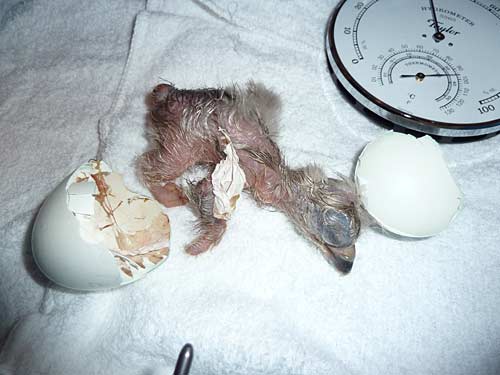Bald Eagle Egg Hatches After Rescued From Orioles’ Florida Spring Training Camp
 January 31, 2011
January 31, 2011  Kyriaki (Sandy) Venetis
Kyriaki (Sandy) Venetis  The bald eaglet at just minutes old. Photo courtesy of the American Eagle Foundation.
The bald eaglet at just minutes old. Photo courtesy of the American Eagle Foundation.
One eaglet has survived and hatched at the American Eagle Foundation’s Tennessee center after being rescued from the Boston Orioles’ spring training ground in Florida.
The hatched egg was one of two taken from the Ed Smith Stadium. The second egg never hatched - despite being given extra time in the incubator.
The players are scheduled to arrive at the stadium early next month. Fears were that flying balls, people, and commuter traffic would endanger both the nesting parents and the newly hatched eaglets.
The bald eagle nesting pair had built their nest on top of a 135-foot lighting pole located in the right outfield of the stadium. After removing the eggs, all of the lighting poles in the stadium were modified with tarps to discourage any new nest from being built on them.
The newly hatched eaglet is being fed by an eagle puppet to prevent human-imprinting. The conservation group plans to release the eaglet into the wild sometime in mid-March, when it will be about 13-weeks old. The eaglet will be placed in an artificial nesting tower located at Douglas Lake in Tennessee.
 animal rights,
animal rights,  wildlife | tagged
wildlife | tagged  bald eagle nests,
bald eagle nests,  bald eaglets,
bald eaglets,  wildlife conservation
wildlife conservation 

